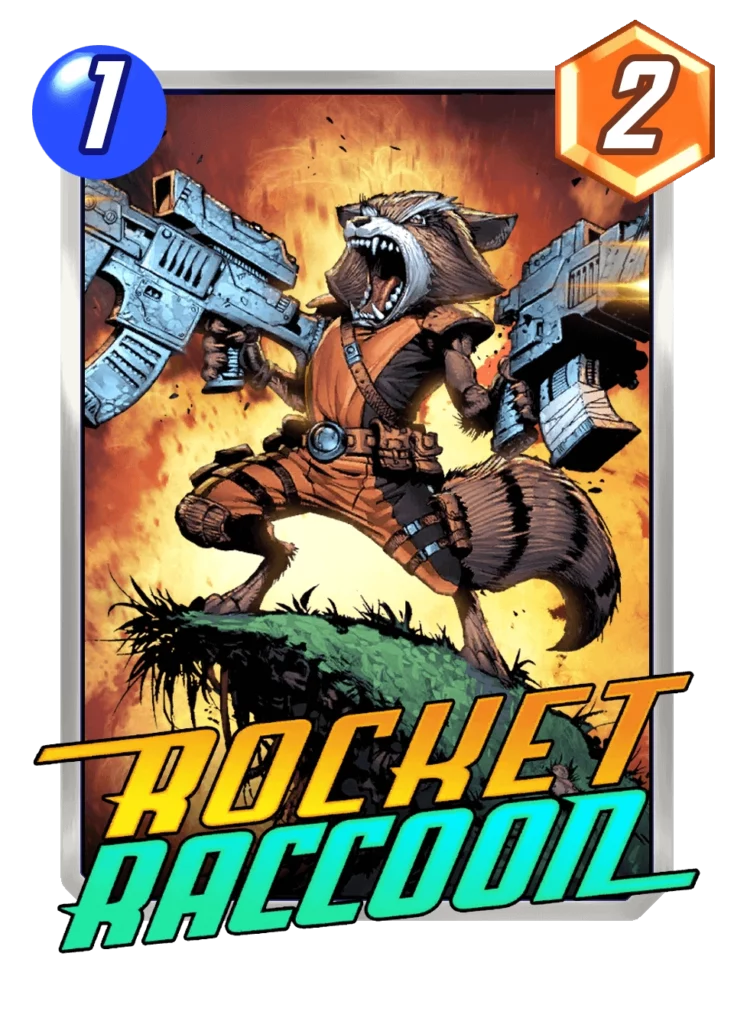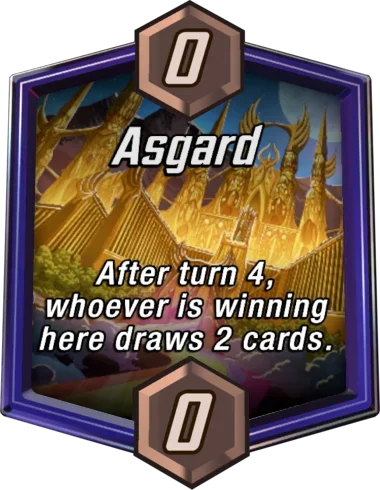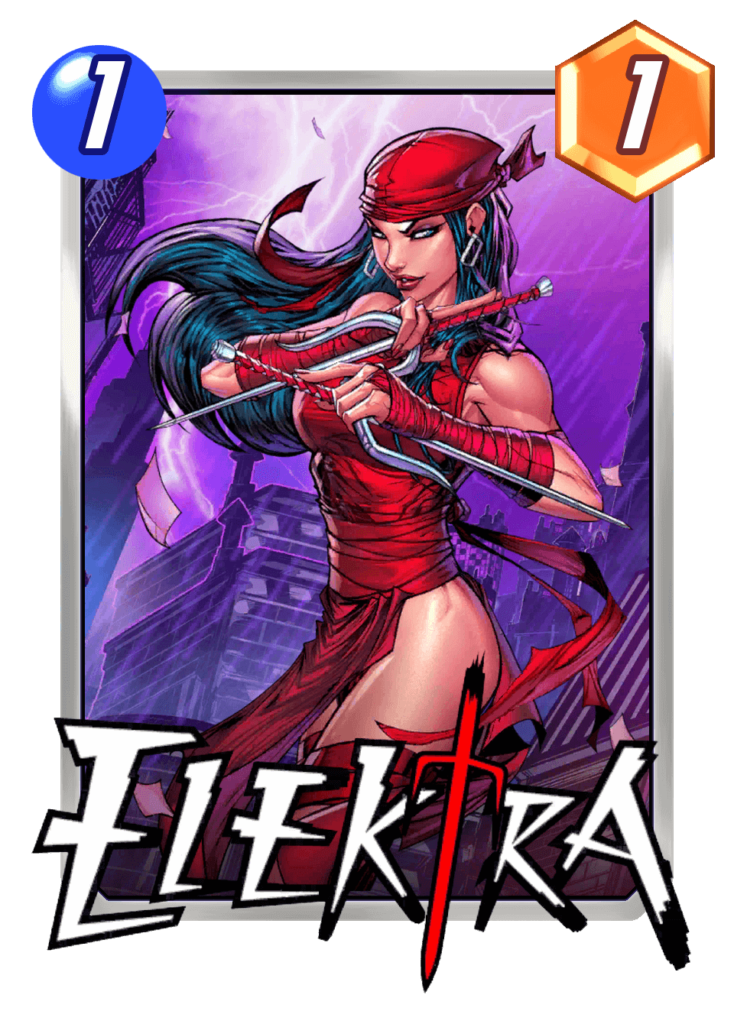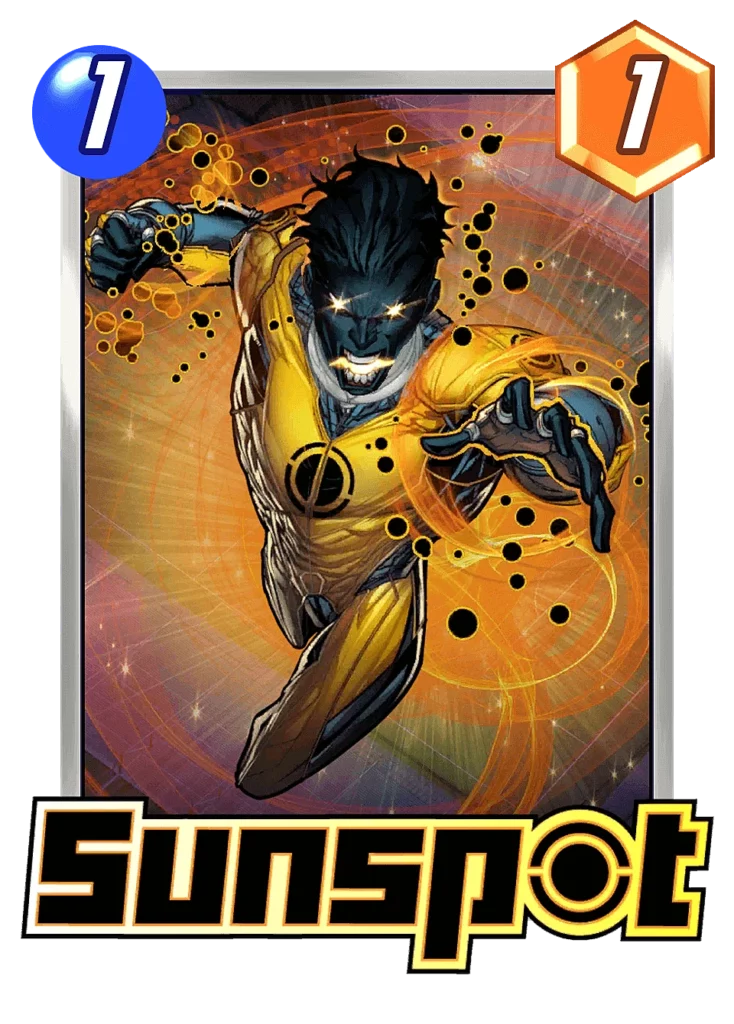Over the course of the last few weeks, Marvel Snap has taken the world by storm. On the back of fast-paced, highly binge-able five-minute games; a fresh new gameplay style based on stacking up power to claim unique locations; and a host of endlessly customizable cards and variant arts featuring the entire Marvel Comics character stable, the innovative card battler famously raked in $2 million in one week.
In all the media fuss about the game’s creative twist on the digital CCG format, mind-bogglingly deep customization tree, and utterly buckwild profits, one topic has been somewhat lacking in the dialogue: how do you play this game well?
So without further ado, Hipsters of the Coast is excited to launch our new Snap section with a focus on just that: the gameplay itself. While the game is still brand new and its global player base will inevitably develop tighter, more “solved” strategies and deck construction styles with time, I believe the four core principles below will equip any Marvel Snap player with a lasting framework that will continue to pay off dividends as the game evolves — giving you the confidence to tap that Snap more games than not.
Let’s get to it!
Marvel Snap Is a Magic: The Gathering Burn Mirror
The goal of Marvel Snap games is simple on its surface: spend six (or so) turns using your increasing Energy to rack up the greatest total Power at two of three locations, which each have unique effects revealed over the first three (or so) turns. This means we always have a limited number of opportunities to make the most of each card.
In a sense, because each turn and each card is so precious here compared to the way most CCGs work, Marvel Snap gameplay kind of inherently hinges on what Magic: The Gathering players call the Philosophy of Fire — which I referenced quite a bit in the latest installment of my deep-dive series on Magic Spellslingers, my other favorite mobile game at the moment.
Simply put, the Philosophy of Fire is an alternative way of looking at Magic cards that evaluates them as straightforward units of damage rather than methods of building up incremental advantages like card advantage or tempo. Marvel Snap‘s brevity of games and extremely small deck size mean that you see almost every card in your deck almost every game. On top of that, turns resolve more or less simultaneously, and locations are strictly limited to four cards per player apiece. In combination, these features ask us to examine every single card in terms of “damage” — or in Snap terms, Power added on your side and/or removed on the other.
Very few cards at this stage in the game’s development exist solely to alter the board state in other ways without contributing much to your Power at a given location. Iron Man and Ironheart have 0 Power on paper but exist to hyper-efficiently boost the power of your other cards. Even the characters with the worst Power-to-Energy ratio — like 4 Energy, 1 Power Sandman or 5 Energy, 3 Power Professor X — essentially exist to curtail your opponent’s endgame Power development at the expense of a turn.
So to put this first core principle of Marvel Snap in a nutshell: evaluate your card choices by how it will feel to spend an entire turn on any given card — and evaluate your play decisions based on creating the greatest Power swing each turn.

Marvel Snap Is Rock-Paper-Scissors
I promise I mean that in the best of ways.
The next core principle of Marvel Snap is: learn to anticipate which location your opponent will focus on at any given time. This instinct arises from a combination of the signals in their play patterns; the incentives baked into the locations and both players’ card mechanics; and a certain degree of plain old human habit and cOmMoN sEnSe.
In the early turns of the game, in part because the left location is always first to reveal and in part because most languages read left to right, players have a tendency to focus on the leftmost location first. This makes “Rocket Raccoon left” a pretty common and powerful first-turn play, outpacing other one-drops when it connects. As the entire Guardians of the Galaxy roster works quite similarly, this little faction teaches us early on to consider plays in these rock-paper-scissors “guessing game” terms.
In situations where the first location revealed is an undesirable or impossible place to play cards — or if you’re just tired of getting Rocket Raccoon Lefted — you may want to jump all the way to the right, as most players currently seem to default to the middle location next. Unless you’re the one with Rocket Raccoon, in which case a bad left location may nudge you to go for the more “obvious” middle location first.
Location effects themselves, or the lack thereof, offer a different set of incentives that toy with players’ minds. On one hand, a revealed location is usually “safe” and means avoiding playing your Blade — or God forbid your Ironheart — on what will turn out to be the Negative Zone. It also avoids the risk of wasting precious slots or reveal triggers on a high-impact beneficial location like Bar Sinister or Cloning Vats. On the other hand, playing cards in unrevealed locations can give you an early leg up on locations that are either harder to access later, like the Danger Room or the new Machineworld, or highly profitable to dominate ASAP, like The Raft.
(It’s also the best way to profit from Asgard, which I’ve otherwise come to view as sort of a trap because of how much less impactful card draw is in Snap compared to other, longer CCGs. Too often you rush to fill it up with smaller early plays, only to draw two cards you’ll never have Energy for by that point in the game and then get outclassed there anyway by one or two late-game cards.)
Of course, sometimes your opponent’s cards signal intent clearly. Hawkeye straight-up tells us where they are probably about to put a card, and Jessica Jones tells us where they probably are not. Ant-Man, even when he’s looking a little lonely, may signal longer-term intentions. However, other cues can be subtler: they may let a location rest for a few turns while their Devil Dinosaur is sitting pretty there at a temporary 13+ Power; alternatively, they may be hesitant to commit a card too soon to the final slot of a location (like Asgard lol) that they’ve already stacked up with three smaller drops early on.
If their deck is focused on interactions around destroying their own cards or moving them between locations, often signaled by early plays like Nova, Iron Fist, or Kraven, that adds another layer to your reads. As you familiarize yourself with the card pool, you should start to pick up on tells as to when and where someone is about to make a payoff play like Carnage, Deathlok, or Doctor Strange — and a discard-centric deck often forces you to keep in mind their number of Swarm copies or the current Power of Apocalypse, and try to plan around where all that Power might end up.
Once you start developing this instinct, the next skill to master is knowing when it’s time to avoid a location your opponent is focused on, versus when it’s time to simply outplay them there — which is where our next principle shines.

Marvel Snap Is Tic-Tac-Toe
Just as the tightness of Snap games gives us limited opportunities to maximize our cards, it also gives us a strong incentive to make our opponent waste theirs.
In some cases, you’re going to recognize a location where you’re hopelessly outgunned and essentially have to give up on a spot. In other scenarios, your best path forward is to “race” them on a given location because you have a game plan for out-Powering them there, effectively “wasting” two to four of their cards. Better still, the right proactive early plays can force your opponent to be the one giving up on an entire location, giving them no choice but to win both others.
How does this relate to tic-tac-toe, you ask? I’m not sure how universal this particular formative experience is, but my young mind was, weirdly, forever altered on some lazy afternoon probably spent in the Friendly’s restaurant at the Freehold Raceway Mall, in the magic moment when I realized that you can always win tic-tac-toe if you just pick any three corners before your best friend, little sister, or mother notice the trick. By picking any two corners immediately, you force your opponent to “block” in between them right away; by going to any other corner next, the result is a board where you have two ways to win on your next turn, while your opponent can only block one.
The difference is, of course, that in tic-tac-toe, an opponent who understands this little childhood life hack can play around it in a way that guarantees neither player can win. In Marvel Snap, a far more complex game with more variables and moving parts, both players can aim to apply this pillar at the same time: maximizing your options inherently limits theirs.
One key lesson to take from this is that, more often than not, it’s wise to spread out your lower-impact early plays across different locations. Having one humble 1- or 2-Power drop like Forge or Okoye at a given location is fine — but having two such weenies at the same location exposes you to getting dunked on when your opponent’s first card in that same place is Deathlok, worth more than your two cards combined. This ties in directly to the Philosophy of Fire discussion above.
In the midgame — that is, basically turns 3 and 4 lol — you’ll be better positioned to assess the landscape and decide which locations represent your wisest commitment. If your opponent has already started to commit in one location, you can even start to look at plays they make there beyond the second as cards and turns wasted in your favor. Although being forced to win two specific locations is not an ideal state, better to acknowledge the reality of your opponent’s overcommitment and let them have at it.
On the flipside, sometimes your deck archetype and opening hand offer you the opportunity to take a calculated risk and commit heavy to a location, becoming the player who has locked the opponent into a raw deal. If the first location revealed is a hot one like Sinister London and you’re on Guessing Guardians, by all means do windmill slam your Rocket Raccoon and Star-Lord there and punish your opponent severely for taking the same bait you did. For another example, an opener with Nova on 1, Wolverine or Bucky Barnes on 2, and Deathlok or Carnage on 3 strongly incentivizes you to go wide and then tall on your first chosen location, with Wolverine even offering a chance at spreading the wealth around anyway.
While these strategies may sound divergent or like simple matters of adapting to context, they actually all emerge from the same core principle: silo the opponent into your endgame — always looking to limit their options and narrow their windows of opportunity with every single play, until you have two paths to victory and they can only block one.

Marvel Snap Is Whack-a-Mole
In some ways this is the most obvious comparison, in some ways the subtlest.
Part of this relates to what we’ve already discussed about anticipating your opponent’s choices in a rock-paper-scissors way, whether it’s for an obvious reason like Elektra or Spider-Woman — in which case, please remember to look for the golden glow around a player’s name to see who reveals first this turn! — or a less obvious reason like “I want to set up my Sunspot action where they have no early play.”
Another part of it goes much deeper: where do I play my cards when the board is basically neck-and-neck?
In this sense, the mole you need to whack like a Sopranos character is not any specific location or opposing card, but the relative Power imbalances (sort of like in real life!) that constantly fluctuate and pop up in different places at any given time. When all else is roughly equal, the location where you’re behind by 1 is probably a better focus than the location where you’re behind by 3, or even by 2. By the same reasoning, a location where you’re only ahead by 2 likely needs more immediate help than a location where you’re up by 5.
In that same board state, faced with a choice between pressing your advantage at the +5 or solidifying your lead at the +2, either choice may be a better use of your turn than going after an uncontested location that’s still empty on both sides or, worse yet, clogged up with problem jank — like Shadowland or the Savage Land. On the other hand, if you’re the player with Carnage in hand, maybe the moment where you’re leading everywhere else is the right time to eat up those Raptors or that Ninja and force your opponent to sweat on all three fronts. (Barring special circumstances like those, trying to actively control all three locations is not often advisable, consituting a mortal violation of this very whack-a-mole principle.)
Card slots per location represent another crucial whack-a-mole axis. If you have roughly equivalent disparities at two different locations — including a disparity of 0, i.e. you’re tied at two different locations — the one where you only have two cards out is likely a preferable place to put your next play compared to a location where you’d be committing to your final play. In a parallel way, when you’re in a similar position at two different locations, it may be a better move to shore up the one where they have less card slots left to compete over it with.
Speaking of that lovable bastard on the other side of the screen, absolutely everything covered in this section must also be applied to your rock-paper-scissors game: an essential part of how you decide which mole(s) to whack each turn is anticipating which mole(s) they’ll want to whack. Let’s go back to our imagined board state: you’re +2 on the left, +5 on the right, and so far both players are ignoring the Savage Lands in the middle. Ask yourself: what would I do in their shoes right now?
At the same time that you’re thinking you need to strengthen your +2 location, they may likewise be thinking that it’s where they should focus as well. This may inform a decision such as, for example, whether the card you place there should be the more predictable Lady Sif or the harder-hitting Sword Master. Alternatively, if one of their slots at that location is being eaten up by Ironheart and they only have one slot left, you may guess that they’ll give up on it and focus on the other two with bigger plays, in which case you likely want to play Sif at your +5 followed by Sword Master at the Savage Lands — or better yet, use both to protect your +5 if you have the slots available, and save your Apocalypse for a last-turn lockdown on your +2.
Lastly, there are elements of bluffing your opponent into whacking the wrong moles. If your Ant-Man has two smallish friends and needs one more, but you conspicuously don’t play anything there for two or three turns, your opponent just might assume you’ve given up on that space and that your Power there will remain static. Similarly, you can race your opponent to fill up an entire location and strategically let them assume they’ve won it — only for you to drop Klaw and Onslaught on the location to its left, or a Ka-Zar or Blue Marvel on your empty side of Bar Sinister.
To summarize this core principle in simple terms: focus on locations that make your job easiest — while remembering that your opponent will do the same, and that card slots as a resource are part of that equation.
And watch out for that goddamn Devil Dinosaur.

I hope this has been a fun and illuminating entry point into the young field of Marvel Snap tHeOrY. Even game sessions as short as Snap‘s merit analysis and strategy, and it is my hope that this piece will provide a lot of players some food for thought at minimum — and more optimistically, help the Snap community develop a conceptual framework for how to understand and talk about this exciting new card game format.
Excelsior!
SINISTRA BLACK (she/her) is a Los Angeles-based writer-director, Transgender Anarchist killjoy, Void Witch, and 24-Power Apocalypse.
She publishes media essays and an email newsletter on her homepage, EASY ANSWERS. She can also be found on Twitter, Facebook, and other platforms, sharing humor, criticism, scorching takes, and maximum carnage.
She is available for hire or mutual self-destruction, but Angel won’t be swooping in to save you this time.


